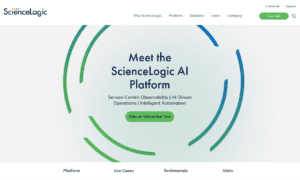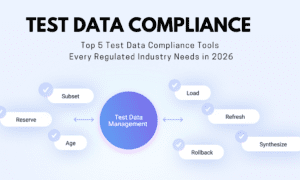Small businesses are the backbone of the economy, driving innovation and providing nearly half of the private sector workforce in the United States. Yet, when it comes to adopting advanced technologies like artificial intelligence, they often fall behind—not due to a lack of interest, but because of complexity, perceived cost, and limited resources. This gap between potential and accessibility is where Gaurab Acharya steps in.
As a Senior Software Engineer at CoreWeave, Gaurab focuses on AI infrastructure, but his background as an entrepreneur has been deeply rooted in helping small businesses leverage technology. While he currently works on large-scale AI solutions, his past experience developing custom software for small businesses continues to shape his perspective. During his early entrepreneurial days, he realized that automation and data-driven insights were the true game-changers. “I chose to provide automation around data extraction and loading to make the move easier to the solution I would develop for the customer,” he recalls. This hands-on experience shaped his approach to problem-solving, ensuring that technology delivers real value without unnecessary complexity. Looking ahead, he hopes to bring these AI advancements back to small enterprises, making them more accessible and impactful.
Today, Gaurab is on a mission to make AI more accessible and practical for small enterprises. He tackles common adoption barriers by offering a phased approach, helping businesses to gradually integrate machine learning into their workflows. “While the enthusiasm is there, hitting the correct balance of what an advanced project might cost is really difficult without any exposure to the data the company is currently transacting,” he explains. This strategy not only reduces risk but also empowers small businesses to adopt AI at their own pace, ensuring the technology aligns with their goals and resources.
At the heart of Gaurab’s work is a commitment to creating modular, scalable solutions that address individual business needs without overwhelming them with technological complexity. By bridging the gap between cutting-edge AI and practical business applications, he is helping small businesses not only compete with larger enterprises but also position themselves as leaders in their respective markets. In part through his efforts, the future of AI for small businesses looks less like an unattainable dream and more like a tangible path to growth and success.
Tech-driven entrepreneurship
When Gaurab began his journey into tech entrepreneurship through freelance work, he quickly realized the market was saturated with similar offerings—jQuery frontends and PHP backends built with various frameworks. “It was a hard sell when approaching possible clients with any solutions when anything I could mention sounded identical to any other freelancer they would have met,” he recalls. More importantly, technical jargon often held little meaning for customers, making it difficult to convey the true value of a solution.
To stand out, Gaurab shifted his approach, focusing on automation around data extraction and loading as part of his services. This not only streamlined the transition to his solutions but also deepened his understanding of each client’s core business. He found that the true value lay not just in outward-facing software but in simplifying internal workflows. “Being able to talk the customers’ language—efficient workflows reducing errors, automation to save costs, and data analysis for targeted improvement—made it much easier to pitch a potential project,” he explains. Over time, this customer-centric approach became the foundation of his work, driving his commitment to delivering practical, impactful solutions for small businesses.
Solving real-world challenges
One of Gaurab’s most impactful projects involved developing a real-time, asynchronous application for a small business that relied heavily on NYC Department of Buildings data. The task was to extract, analyze, and deliver this vast stream of information directly into the company’s existing project planning software. “The sheer volume of data and the breadth of the topics it covered made this an immensely complicated project to execute as a realtime application,” he explains, especially when integrating with a system never designed to handle such scale and detail.
Through multiple iterations, Gaurab successfully guided the client toward a fully integrated solution. This not only provided real-time updates for their customers but also automated the company’s in-house accounting processes and created a robust data bank for business intelligence purposes. By transforming complex data into actionable insights, Gaurab’s solution streamlined operations and empowered the business to make more informed, strategic decisions.
Overcoming AI adoption hurdles
Before joining CoreWeave, Gaurab worked as a freelancer and entrepreneur, where he observed that for many small businesses, the biggest hurdle in adopting advanced technologies like AI was the perceived cost. While many business owners were enthusiastic about leveraging AI, the lack of familiarity with associated expenses—such as cloud-based pricing, GPU costs, and training time—often made it seem unattainable. “A fair and open approach often led to many potential small business clients getting ‘spooked’ by basically all the metrics around AI,” he recalls.
To address this, Gaurab introduced a tiered approach to AI adoption. This method allowed businesses to gradually integrate machine learning principles into their internal workflows, starting with statistical insights before advancing to full AI integration. “This approach generally front-loaded more of the risk for my business, allowing my customer to be more secure with the knowledge that a proof-of-concept had been achieved,” he explains. By providing clear metrics around cost versus output, he helped small businesses adopt AI at a pace that aligned with their comfort and resources.
Scalable solutions made simple
The key to balancing scalability with customization lies in modular design. “Modularity is the name of the game here,” he explains, emphasizing how adaptable architectures can accommodate businesses of varying sizes without requiring extensive rewrites. By designing systems with interchangeable components, he created solutions that could scale alongside a company’s growth while remaining tailored to their unique needs.
During his time as an entrepreneur, Gaurab applied this approach to small business solutions, ensuring that modular systems remained functionally identical even if slight compromises were made in more advanced software versions. “This opens the pathway to keep your focus on tailoring to the individual customer’s needs rather than on the infrastructural components,” he adds, highlighting how this strategy allowed for personalized, scalable solutions without unnecessary complexity.
Bridging the AI gap
Bridging the gap between complex AI systems and small business adoption hinges on two key factors: cost and education. Without clear benchmarks and understandable metrics, small business owners often struggle to evaluate AI solutions, leading to hesitation. “Some standardization of observability metrics as pertains to AI would go a long way in dealing with customers’ willingness to adopt AI workloads into their processes,” he explains.
Gaurab likens the challenge to web hosting, where users typically don’t concern themselves with the company powering their site. However, they do care if the system is built for e-commerce or content management because those distinctions directly impact functionality. The AI landscape, he notes, suffers from a lack of clarity around which models best serve small business needs. “The landscape for training workloads is further nebulous, with there being close to no general knowledge as to how one might begin such a process,” he adds. To drive widespread adoption, Gaurab believes standardized processes and comparative metrics must become the norm, enabling small businesses to better navigate AI integration with confidence.
Building long-term value
Delivering long-term value to small businesses goes beyond solving immediate challenges—it’s about building lasting partnerships. “My goal as an entrepreneur had always been to foster long-term partnerships with my customers,” he explains. One way he achieved this was by front-loading some of the risk on his side, giving clients the confidence to explore new solutions without bearing the full financial burden upfront.
Modular software components also played a crucial role in his approach. By designing systems that can be easily swapped or scaled based on a business’s evolving needs, Gaurab created a clear, adaptable path for growth. “This approach laid out a path that businesses might follow, allowing my customers to plan their longer-term strategy with more confidence,” he shares. Coupled with his tiered adoption strategy and a commitment to transparency, this approach helped ensure that the technology he provided could continue to deliver value as his clients’ businesses grew and adapted.
Powering growth with data
Gaurab believes that observability plays a crucial role in helping small businesses succeed, especially when resources for long-term experimentation are limited. “Observability is key in allowing for a business to thrive, and especially so when it comes to small businesses,” he explains. Without access to timely insights, smaller enterprises often struggle to make informed decisions about their strategic direction.
By highlighting key metrics, observability empowers small businesses to pivot toward their goals while maintaining focus on their core operations. This data-driven approach enables them to identify opportunities, streamline workflows, and avoid costly missteps. As Gaurab emphasizes, having clear, actionable insights allows small businesses to compete more effectively in a fast-moving, tech-driven landscape.
The future of AI for small business
AI is becoming an essential tool for businesses of all sizes, with small enterprises standing to benefit significantly from its adoption. “It is not a question of how but when all businesses will be leveraging AI for their needs,” he explains. For small businesses, integrating AI into their internal processes can streamline operations, enhance decision-making, and create new opportunities for growth.
Beyond improving efficiency, Gaurab believes AI adoption could transform small businesses from consumers to providers of AI-driven services. “Businesses that incorporate this tool towards improving their internal processes and possibly internalize their custom AI infrastructure/workflows will have the potential to become providers of AI services rather than be strictly a consumer of said services,” he shares. By developing their own AI solutions, small businesses can better compete with larger enterprises while offering specialized services to their customers.
Today, Gaurab’s work continues to help reshape how small businesses embrace technology, suggesting that AI can be both accessible and transformative when applied thoughtfully. His approach goes beyond just delivering cutting-edge solutions—he focuses on understanding each client’s unique challenges and crafting systems that help streamline workflows, reduce costs, and drive growth. By offering tiered AI integration and modular software solutions, Gaurab empowers businesses to adopt technology at their own pace, helping to ensure long-term value without overwhelming complexity. His commitment to bridging the gap between advanced technology and practical business needs is not just about keeping small enterprises competitive but about equipping them to thrive in an increasingly digital economy. As AI becomes an essential tool for businesses of all sizes, Gaurab’s work stands as a testament to how thoughtful innovation can transform potential into lasting success.































